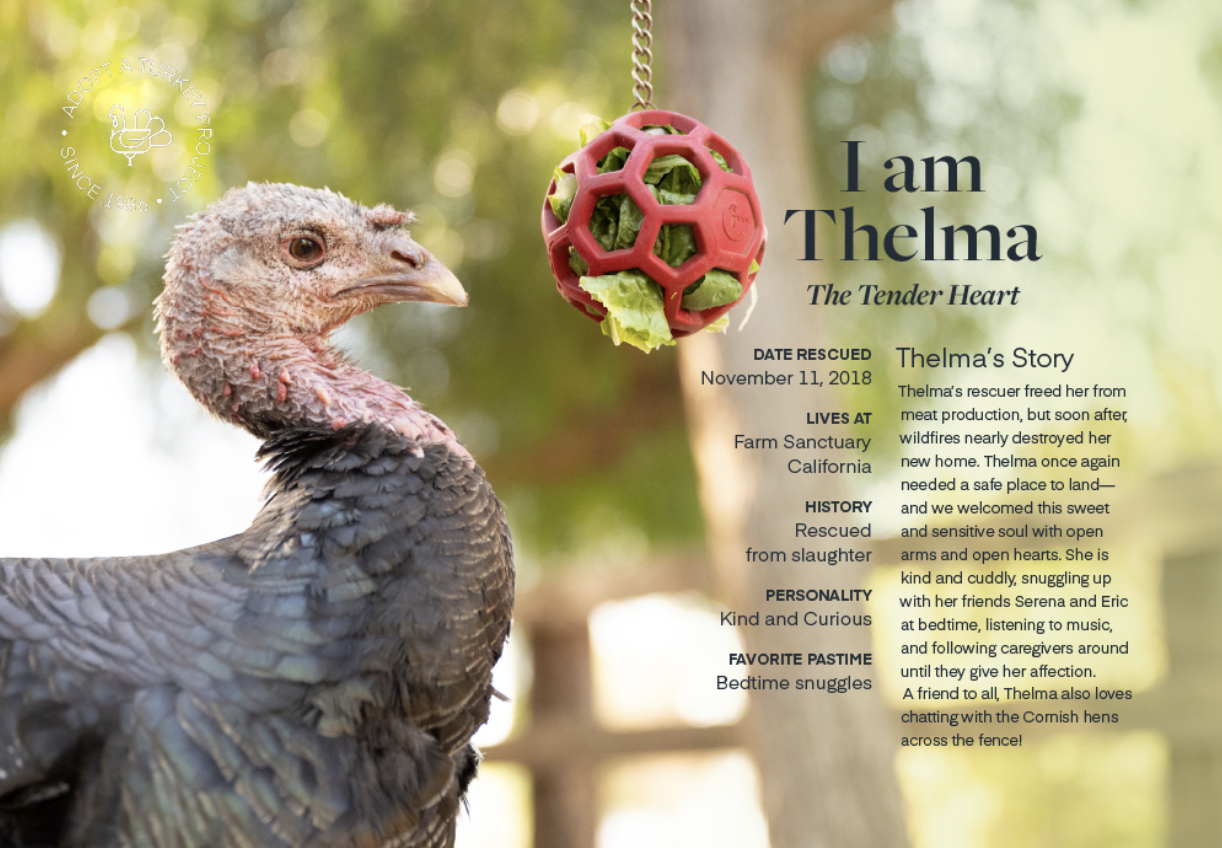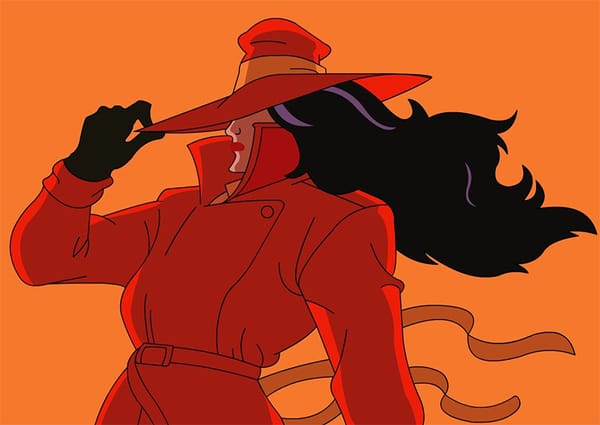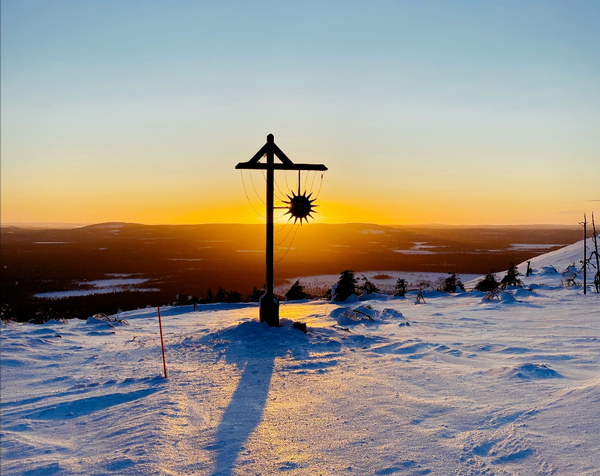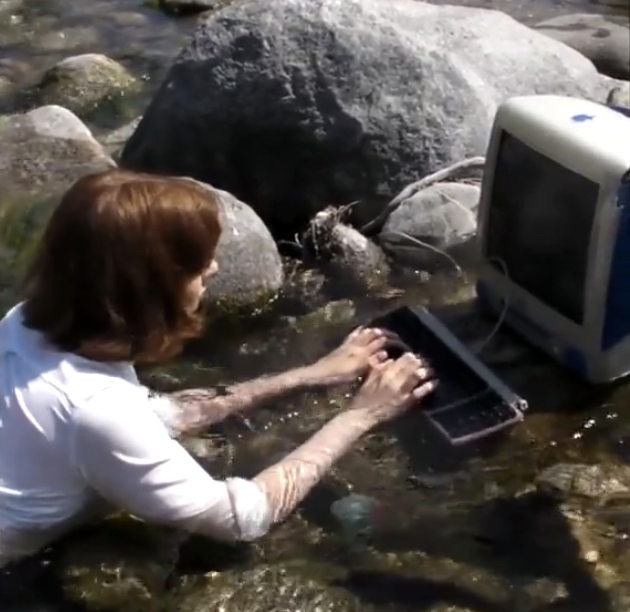A Feast of Contradictions
A Talking Dog and Sharing a Table with People Who Push Your Buttons

A few months ago, I decided to teach my dog how to talk. What I mean is I bought one of those mats with the buttons. Each button can be programmed with a recorded word or phrase like, go outside or play, and the dog presses a button to communicate. I thought this would be a fun experiment to try with my dog Nala, a chance to bond and understand what she’s really thinking. But getting to know what anyone really thinks – whether they’re a human or a dog – is a risk. Because their answers might challenge what you thought you knew and test your capacity for understanding and connection.
So far Nala has three words. The first is walk, which I knew was going to be a hit since even saying the W-word around her without following through can lead to hours of sighing and long, disappointed stares. The second word, I’ll admit, was for me. I added snuggles because if my dog is going to talk, I want to know that she loves me.
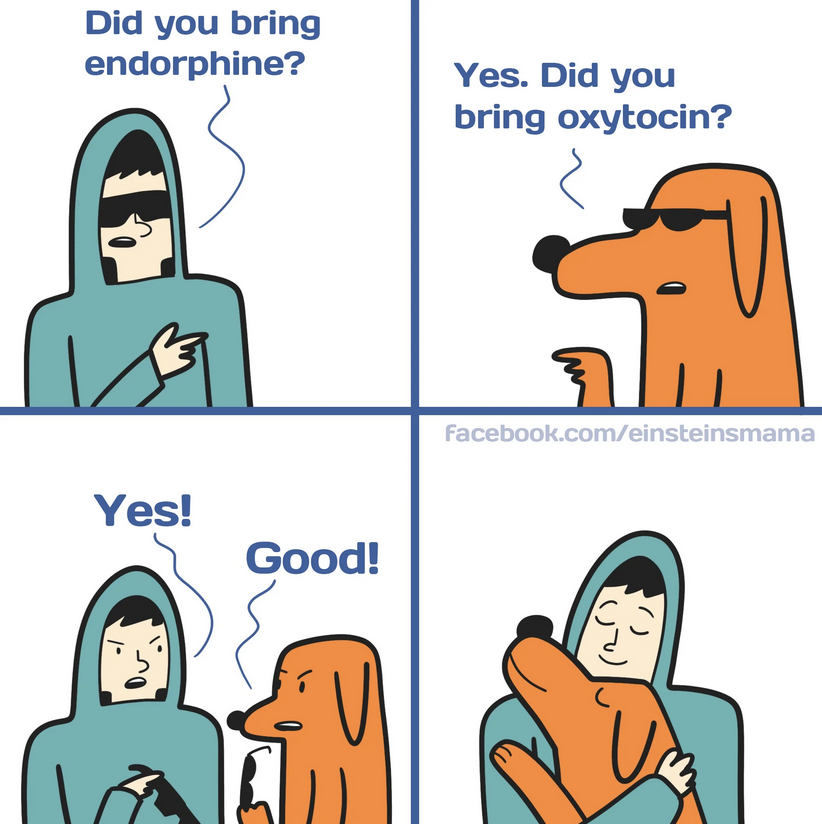
But neither of those buttons have anything on the third – the reigning favorite – chicken. Nala has pressed the chicken button so many times that she broke it. So this button is actually the replacement chicken button, it’s Chicken Jr., and both chickens are descendents from the breakfast and dinner buttons, which were retired in favor of a more precise description of what Nala eats, which is pan-seared chicken. And not just any chicken. These chickens are free-range, organic chickens who sleep on feathered beds and sip artisanal spring water until they’re chauffeured to they’re untimely end.
I swear I didn’t used to be like this. When I first adopted Nala, I bought mid-shelf kibble, but after countless visits to the vet and endless trials of dry and wet food, homemade chicken turned out to be the only cure for her skin-allergies. Chicken also transformed me into a person I don’t totally recognize: A vegetarian who prepares chicken for her dog a few times a week.
I became a vegetarian as a kid after seeing a video of cows strung up on their back legs and screaming as they were taken to slaughter. I couldn’t imagine how anyone could eat meat after seeing something like that. This was in the late 90s when vegetarian options were limited, and growing up, I didn’t eat balanced vegetarian meals. My childhood tasted like iceberg lettuce and marinara sauce, and until recently I thought having low iron and filling up on carbs was a normal way to live.
But there was one summer that marked a turning point in my relationship with food. It was after my freshman year of college, and I was working a sort-of job on a farm in North Carolina close to my campus. I say it was a sort-of job because I wasn’t paid in cash. Instead I was given a place to sleep – a small house I shared with my friend Morgan and a cat named Buster. And we were paid in meals that included foods I’d never heard of: Swiss chard, ostrich eggs, okra, kohlrabi, and lots of local meats.
When I first got the job, I didn’t know how I was going to live off this food. My plan was to use my saved-up birthday money to buy cookies and chips at Harris Teeter, indulging in secret carb binges just to stay full before returning to work. But once the work began, something changed. The days were long – harvesting vegetables, working in greenhouses and delivering CSA shares. On Sundays, we sold at the farmers market and met people who raised alpacas, wild turkey and ostriches. At least once a week, one of us would bring home an ostrich egg, which looked like a relic from The Land Before Time. To crack it, we’d hold it up to a light, find the air bubble and puncture it with a hammer and nail.
I was exposed to so many new foods and people that summer, and over time I saw the animals differently. They weren’t crowded into feedlots like the dangling cows. They roamed and pecked freely. When my boss explained that these animals were raised and killed humanely, something shifted for me. Maybe it was her explanation or maybe it was my hunger after days working under the hot North Carolina sun, but that summer I let myself eat meat. And it was delicious.
Every night, we’d all gather around a big table on my boss’s porch where we drank wine and ate meals with second helpings of ostrich burgers and steak, bacon and venison. Then we’d play cards until people got too drunk or mad to continue. Looking back, I felt primal and alive, surrounded by dirt, animals, food on the table. It was one of the best summers of my life.
That fall when everyone returned to school, I was happy to see my friends who’d been away, but it wasn’t the same communion that I’d found working in the fields and eating together under the stars. I missed the farm life, so over fall break I volunteered to help some farmers I’d met that summer, brothers who owned a wild turkey farm and were preparing to slaughter their birds for Thanksgiving.
A small group of us drove from our brick-lined, keep-off-the-grass campus to the humble farm. The lush greens of summer were gone and replaced with brown, hardened ground. Turkeys and chickens I’d seen pecking and roaming that summer were now corralled. I’d eaten plenty of meat that summer but never been part of an actual slaughter.
The setup was very DIY – an orange cone turned upside down, fixed to a pole with a bucket underneath it. The idea was that the bird’s head would go through the narrow end of the cone, while its body stayed contained, limiting movement. The brothers explained that this was less stressful for the bird than the chaos of an industrial slaughterhouse. It would be quick, they said, and handed me a sharp knife.
Should I tell you this part? Or should I keep it hidden, the way so much of the meat industry is concealed. Should I admit that while holding that knife I felt a bolt of power surge through my body? Should I tell you that I looked into the creature’s desperate eyes? Should I say that I never even considered backing down? In that moment, I understood why people like to hunt. But that moment ended the second the sharp knife slid through the neck. As soon as its head fell into the bucket, all of that power and excitement drained out of me, and I felt only emptiness.
I’m not sure what happened next. I didn’t kill another bird, but the rest of that day is a blur. Taking a life, even in the most ethical way, was a side of nature I couldn’t unsee. That’s not to say I don’t support this farm – it used humane methods, and I saw firsthand that these animals lived good lives, with room to roam and decent care. But most of the meat industry doesn’t look like this, and most of the world can’t afford to be vegetarian. For most people, eating meat is part of survival, not a lifestyle choice.
But this is something I didn’t understand for many years. When I returned to campus, I went back to being vegetarian, and as I learned more about the meat industry, my anger grew. I wasn’t just mad about the abuse and slaughter of animals but also about the treatment of factory farm workers – many of whom are immigrants or living in poverty, working in dangerous conditions for little pay. I was furious over how factory farms were polluting rivers and harming air quality, and I took my frustration out on the meat eaters around me. At the dinner table, if someone made a quip about me being vegetarian, I didn’t hold back. I’d tell them exactly how the meat they were eating got to their plates. I could be hostile, and often felt like an outsider, especially among people who had the means to change their eating habits and chose not to.
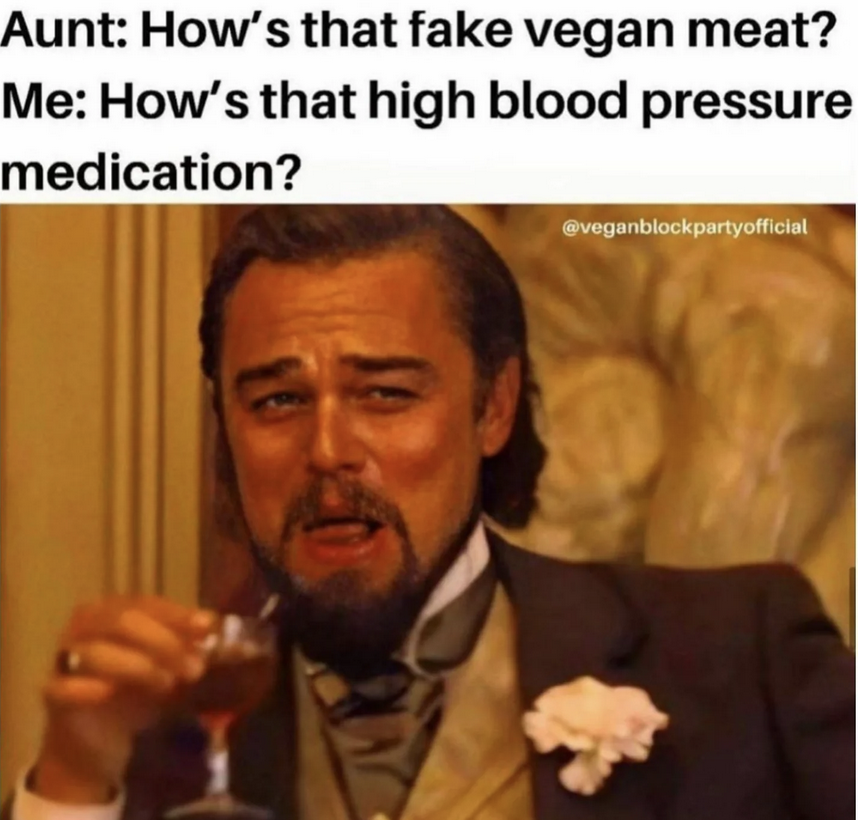
But then I grew up. I kept wishing people would care about the workers, animals and the environment, but I learned that pure anger doesn’t change anyone’s mind. People are raised differently, and while I didn’t agree with their food politics, I could let it go when someone suggested that I should “just try meat again.” I didn’t need to try, but I also didn’t start arguments. I knew I was never going be a meat consumer, and I was secure in this belief about my myself – at least, until Nala and the chicken.
These days, when the chicken button goes off, I’m neither resentful or overjoyed. I don’t like the slippery pink texture or the smell that lingers in the kitchen afterward, but I love Nala’s smile as the pan crackles and hisses. I get a little grossed out tearing the chicken into pieces before putting it in her bowl, but I’m grateful this food has made her healthier. The chicken button taught me that love often means holding contradictions.
I’ve been thinking about this as Thanksgiving approaches, a time when many people will be sitting around tables with family members who push their buttons. There’s tension in these moments, in trying to hold onto your own beliefs and also respect someone else’s humanity. And more than just tension, there’s often anger and hurt. It’s difficult to navigate these emotions with love. It’s uncomfortable. It demands presence. And both are part of gratitude.
For years I hated that part of Thanksgiving dinner where everyone went around and said what they were grateful for. Sometimes I’d leave the table early or show up late to a Friendsgiving just to avoid the ritual. It felt so performative, like a contest of who was living the best life. Many years, I wasn’t fulfilled in any area of my life, and trying to come up with something I was grateful for felt like just another failure.
But I’ve been realizing, as I’ve been letting go of many parts of my identity, that gratitude isn’t about what you have. It’s not a catalog of things that are going well. It’s not about making everyone feel included or even looking for the silver lining. Gratitude is about presence. It’s being in the mess of life and not rushing to make sense of it. It’s showing up – whether that’s at a table, or by choosing to stay home, or some secret third option. It’s about accepting that in every choice discomfort and joy coexist. We don’t have to pick a side or hold tightly to who we thought we were. Identities shift, people change, sometimes in ways we can’t predict, and maybe it’s okay not to have all the answers right now. Maybe it’s better that instead of certainty, we get dogs, chickens, buttons, and all the contradictions that make us human.
